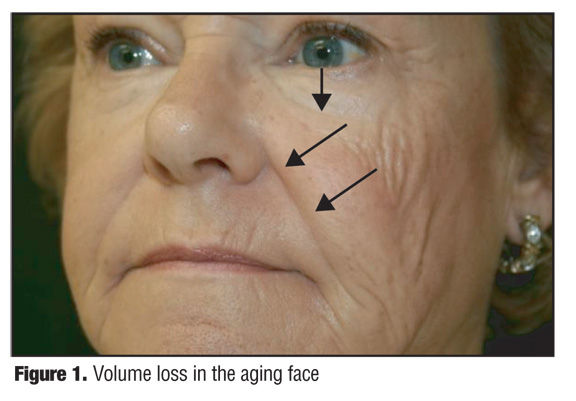
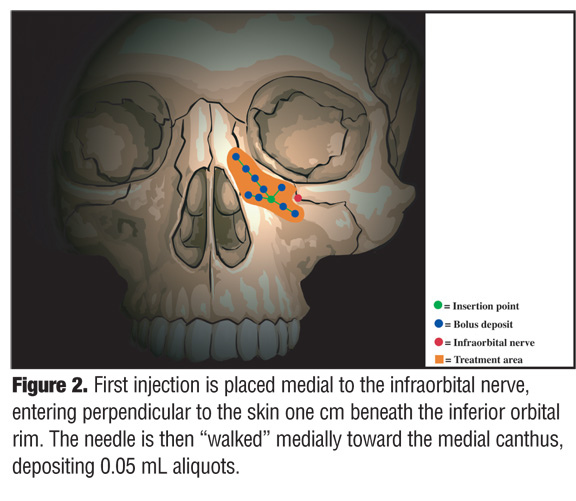

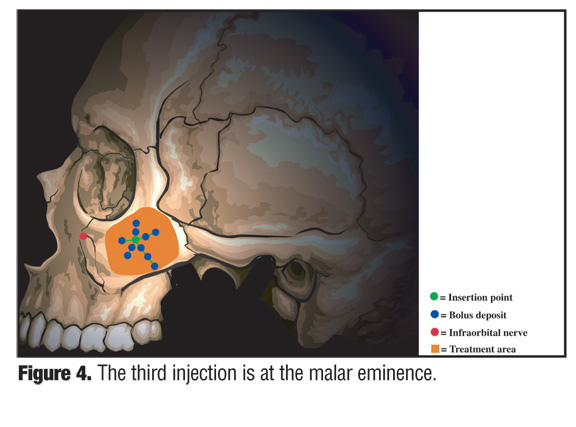
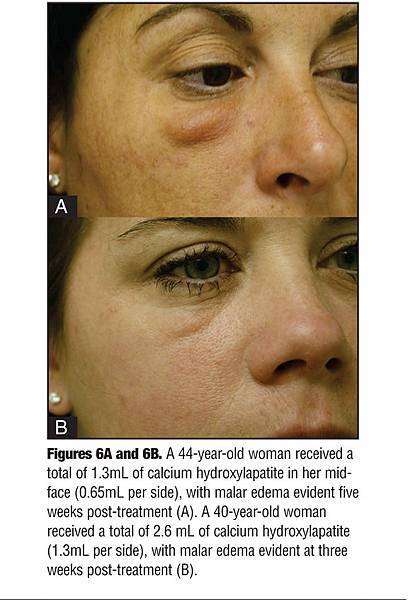

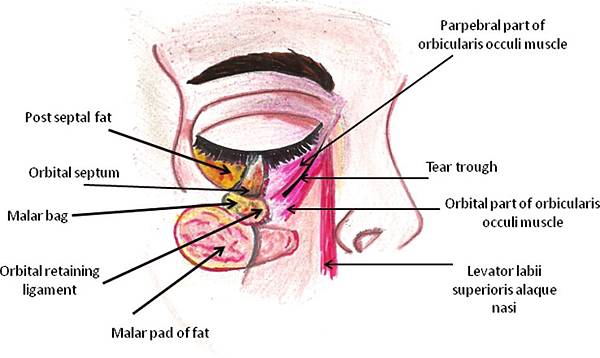

The malar septum:the anatomic basis of malar mounds and malar edema.
Aesthet Surg J. 1997 Jan-Feb;17(1):11-7.
Pessa JE1, Garza JR.
(http://www.ncbi.nlm.nih.gov/pubmed/19327681/)
Abstract
The anatomy of malar mounds and malar edema is evaluated in a series of 18 fresh cadaver dissections. Dye injection, histologic evaluation, and gross anatomic dissection are used to identify a previously unrecognized fascial structure of the lower eyelid and cheek. The malar septum originates from orbital rim periosteum superiorly and inserts into cheek skin 2.5 to 3 cm inferior to the lateral canthus. This fascial structure acts as a relatively impermeable barrier that allows tissue edema and hemoglobin pigment to accumulate above its cutaneous insertion. The malar septum, which acts as both a functional and a structural barrier, defines the lower boundary of several clinical entities:malar mounds, malar edema, malar festoons, and periorbital ecchymosis. The permeability characteristics of the malar septum suggest that, at least in some persons, malar mounds may be accentuated by chronic lower eyelid edema, and these characteristics may imply a time course in the progressive development from malar edema to malar mounds and, ultimately, to malar festoons. The anatomy of the malar septum is clinically relevant because it defines the four anatomic compartments of the malar mound that should be considered during surgery:the Superior compartment of Suborbicularis oculi fat, Orbicularis oculi muscle, and Superficial cheek fat and Cheek skin superior to the cutaneous insertion of the malar septum.



 留言列表
留言列表
